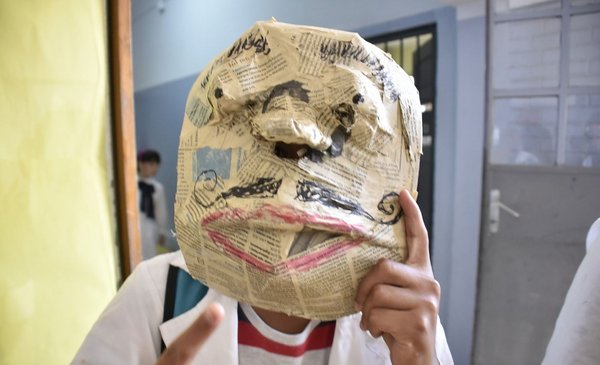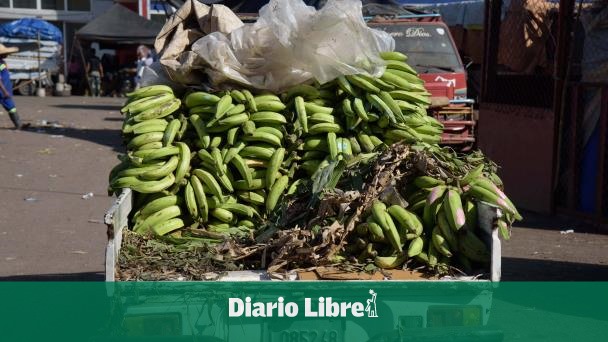When asked to write his name, the boy returned a stunned look. When they began to imitate the sound of the jota —the initial of the first of his names and as it will be called in this note—, with the intention that he would trace that letter on the sheet, he continued with the same lost look. I had never held a pencil.
The NGO technician who visited him —based on a neighbor’s complaint—, in a precarious house with low ceilings and peeling near Lecocq, knew that something was not right. Jota, who was over seven years old at the time, was of an age to identify and trace letters, to read a simple message in print and in capital letters, or to name colors without making mistakes. But he didn’t know any of that and more: if he wanted to understand about sharing a toy, playing the role of a doctor or a teacher, or expressing his feelings. Jota had not set foot in a classroom despite the fact that, by law, he had to do so three years before the technician’s visit.
In Uruguay it is often repeated that all children are enrolled in a school. But the postulate is a bit exaggerated and a bit complacent. Because in the country that makes up the select group of the most digitally advanced governments, in which there are no inhospitable and less impenetrable areas, in which each live birth receives their identity document before hospital discharge, in the most egalitarian country in the region judging by the Gini index, and where those born in the same year fit in the Centenario Stadium and even leave more than a third of the auditorium free, there is no complete record of whether all children are in school.
That information “black hole” is likely to be small, but like anything unknown, no one knows for sure how small it is. The Continuous Household Survey —the instrument used by the National Institute of Statistics (INE) to estimate the income and other variables of Uruguayans— estimates that, among school-age children, from 0.4% to 1.7% — depending on the year—does not attend any educational center. That means between 1,500 and 6,500 of those minors are outside the system and the radar of the National Administration of Public Education (ANEP).
The ECH indicator is the one used at the official level to estimate the level of achievement of educational coverage goals. But since the instrument was not created for this, the education authorities —including ANEP, the National Institute for Educational Evaluation, the Ministry of Education, Ceibal and the INE itself— are thinking of new ways to measure it.
“Difficulties in the systematization of all the information have been pointed out by different institutions for years”, recognizes the technical director of Ineed, Carmen Haretche. For this reason “we began to meet to go about articulating the administrative data that each institution has and that can give an idea of the total universe”, says the doctor in Sociology, who admits that the main problem “is not designing a system that follows traceability of the child from birth and is assigned a document number, but rather the difficult thing is to harmonize the wealth of dispersed information that each organization collects in different ways and on different supports”.
In fact, ANEP does not even have all the data on each student who attends a private schooldespite the fact that it is the governing body and the one that executes educational policies.
In that sense, the survey used so far is, as the name suggests, a survey. This means that it tries to represent the population, but it does not have the data for the entire population: it has its biases, its sampling error margins and, furthermore, it lacks the identification of each of those children who are outside the educational system. .
To put it simply: Jota would never have been located by a survey and was not listed in any ANEP database either.
His life is X-rayed in a cluster of court files dating from 2014, the same year he was born. First, the removal of her mother’s power —addicted to base paste—, then the separation with her aunt —described as violent and without a home to live in—, later, the violation of basic rights suffered by a second aunt —whom Justifica entrusted him with psychiatric treatment—, enrolling in the first year of school without ever having attended initial education, the INAU, which should have taken responsibility, entering a state home, re-enrolling in another school because no one sent him to class in the first, and just this last year, in 2022, the one taken at an educational center in the same neighborhood as that state home.
“Now he is another child”, says one of the techniques that followed his case in the last two years. In the midst of the pandemic, when the other technician had visited Jota’s precarious house and had noticed that he was illiterate, the boy seemed like one of those stories of people without any socialization who are located on a lost island. Except that he lived 25 minutes by car from the Center of Montevideo. Only that the Justice had followed him, only that he had an identity document, only that a part of the State knew of his existence and despite this, for years they did not go looking for him to attend a school.
“From 2020 to 2022 we have recruited about 45 children who, despite being of age to attend compulsory education, were completely off the institutional radar,” tells Adriana Briozzo, coordinator of socio-educational projects of the NGO El Abrojo. “Before the pandemic, there was a not insignificant number of children who fell into this ‘black hole’ of information, and the pandemic wreaked havoc: new neighborhoods arose, with a few blocks and with their own identity, where the State has very little presence.”
The periphery of Villa Colón, the end of Piedras Blancas and other parts of the city reveal a Uruguay that is particularly unequal in how it treats its children. Statistician Juan Pablo Ferreira, a professor at the Faculty of Economic Sciences and Administration of the University of the Republic, made an analysis of the percentage of child poverty in the different census segments of Montevideo. That is to say: he divided the capital into about 1,000 parts in which each little piece contains about four blocks. And he came to the conclusion that the poverty values for South Sudan and Luxembourg are ten minutes away if you look at the departmental map.
Juan Pablo Ferreira’s studio.
“There are areas where more than 60% of the kids are poor. Unfortunately nothing new. Obviously we still have no future”, the teacher had tweeted.
Nothing new
Mrs. Eme —initial of one of her names and as she will be called for this note— has been conscious of her 33 years for a long time, wondering why her mother never enrolled her in a school. Her 13 siblings learned to read and write, but she never sat on a school bench.
“I don’t understand why my mom never sent me to study, I think and I don’t understand.” Load me with that unanswered question. “My mom sold me to the men in the area —in the Mendoza neighborhood—, some of them with a lot of money, but he never wanted to send me to school.”
The State never went looking for her. Only at the age of 12, at the age at which in theory she should be finishing school, did they ask her in public health why she was not registered. She was already late: at that age she became pregnant with the first two children of the seven that she had in total.
Some of her children did not go to the garden, even though The Education Law says that compulsory education begins at four years of age., but all entered Primary. “I wanted to give them what they didn’t give me,” she says, somewhat annoyed by what was lost and equally upset because the youngest of her children is in the hands of INAU and she can only see him every two months.
“It’s incredible: when I was on the streets and a rat bit one of my children, the State never took it upon themselves to take them to INAU so they could sleep in a safe area, and now that I have my things, they take the youngest from me. …”.
According to Briozzo, from the NGO El Abrojo, myths are often repeated in Uruguay. “In 1995, when we started the community teacher program that was later incorporated into ANEP, it said that there were no illiterates in the country and we found a few. Now it is said that all are educated and this is not the case… there are cases of fifths or sixth generations of poverty to which the State reaches little and which is further and further away”.
He refers to the fact that the closure of some Mides local services that were in the territories —such as the Socat— are being replaced by single windows that families have to approach proactively and, according to Briozzo, “make it more difficult capture the cases of the black hole”.
In the visits that the Mides makes for the assignment of the help cards, from time to time it finds the little brother of a child who is not in school. This happened last year near Pando, where a pre-adolescent who had never attended school was found and who is now being followed by the ANEP Youth and Adults program.
But these ministerial visits are not exempt from difficulties: there is a waiting list of “thousands of interviews”, the census modality in which places were to be visited without a prior appointment “is tending to fall into disuse, the number of technicians and Above all, for security reasons, you have to do it in pairs,” explains Ana Casteluccio, president of the Mides workers union, who warns that “The tendency to withdraw from the territory is making it difficult to reach those cases that are not known.”
Territorial offices are often the ones that find cases of children separated by internal migration. “What happens is that extreme poverty moves a lot,” explains Briozzo. He says that recently they had to take care of some children who moved to Rivera’s apartment less than a year ago for a harvest from their parents. Due to labor problems, they moved to Salinas, from there to Colón and now to Las Piedras. “School continuity is very difficult like this and schooling rides along with these ups and downs”.
But unlike what happens with the black hole, these types of “disengaged” children are on the school record and teachers can report absenteeism.
unlinked
It is like a rock that is shelled and getting smaller and smaller. This is how education technicians describe the Uruguayan system. Generations begin almost complete educational institutions —except for the black hole—, but little by little they become smaller. Some continue untimely, others simply drop out, and only a third finish on time.
Avoiding disengagement is one of the indicators that gains more weight in the current education system, much more in the prelude to an educational reform that aims to offer a more attractive curriculum for students.
At the beginning of the 1960s, when, as Minister Pablo Da Silveira recalls, high school students could all fit in the IAVA, teaching was selective. But now, when the paradigm is that attendance at formal education is a student’s right —an obligation of their responsible adults—, empty benches are a sign of a malfunction in the system.
It is because of this change in logic that the ANEP has programs in which they follow up and search for those children who were in the system and no longer were. Yes indeed: Jota would never have fallen into a program like this because, directly, it was out of the registry.

















